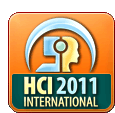T22: Interactive Business Process Development – The Stakeholder Approach
Half Day Tutorial
Albert Fleischmann (short bio)
Metasonic, Pfaffenhofen, Germany
Christian Stary (short bio)
University of Linz, Department of Business Information Systems- Communications Engineering, Linz, Austria
Objectives:
Business Process Development (BPD) is recognized as a top business priority. While BPD is more than technology, interactive process development requires a stakeholder-oriented description language and a communication-oriented BPM (Business Process Management) suite for on-the-fly adaptation of processes. BPM Suites have been historically very fragmented. This situation is in the process of being transformed, driven by two forces: choreographed processing of representations, primarily driven by socio-economic networking, and stakeholder orientation. Due to the resulting actor-specific seamless specification and execution capabilities, interactive BPD is a harbinger of this transformation.
This tutorial provides an exposure to stakeholder-driven BPD and walks you through the development of a business process application based on a real-life scenario. The solution is built in an iterative fashion, with each section introducing a new element until a complete process can be generated. This fully illustrated step-by-step tutorial is based on proven education content that has been praised by newcomers, academians, and business professionals in courses given as hands-on learning.
Content and benefits:
Accelerate your learning path to interactive and seamless stakeholder-driven business process development with this easy-to-use and comprehensive hands-on tutorial.
What you will learn from this tutorial:
- Understand actors and communication as the major sources of BPM and BPD
- Model executable processes with Subject-oriented Business Process Modeling
- Experience the benefits of choreography when integrating actor-specific processes
- Optimize your processes using process execution
- Design complex stakeholder task flows
- Explore life-cycle management features
- Stay conform to BPMN 2.0
The tutorial will be subdivided into several parts. In the first part, we motivate interactive BPD, revealing design benefits and deficiencies of existing techniques. Then, we discuss essential elements that influence interactive process development: Actors, Activities, Messages, and Business Obects. Thirdly, different ways to construct process model are practiced, ranging from step-by-step-composition following the natural language syntax of sentences, to restricting universally applicable communication models. Finally, we process model representations directly (i.e. without further transformations) to demonstrate the uniqueness of the approach. We illustrate corresponding guidelines, using an example of a process model from practice.
Target audience:
This compact, but still detailed tutorial is designed for both new and experienced interaction designers in work environments and socio-economic networks, business process developers, information architects, communication designers, all looking for a pragmatic and hands-on approach to stakeholder-driven system development.
Both, practitioners with an interest in improving their interaction and process modeling styles on the one hand, and (young) researchers interested in pursuing research in task- or process-driven HCI, are addressed.
Brief Biographical sketch(es):



